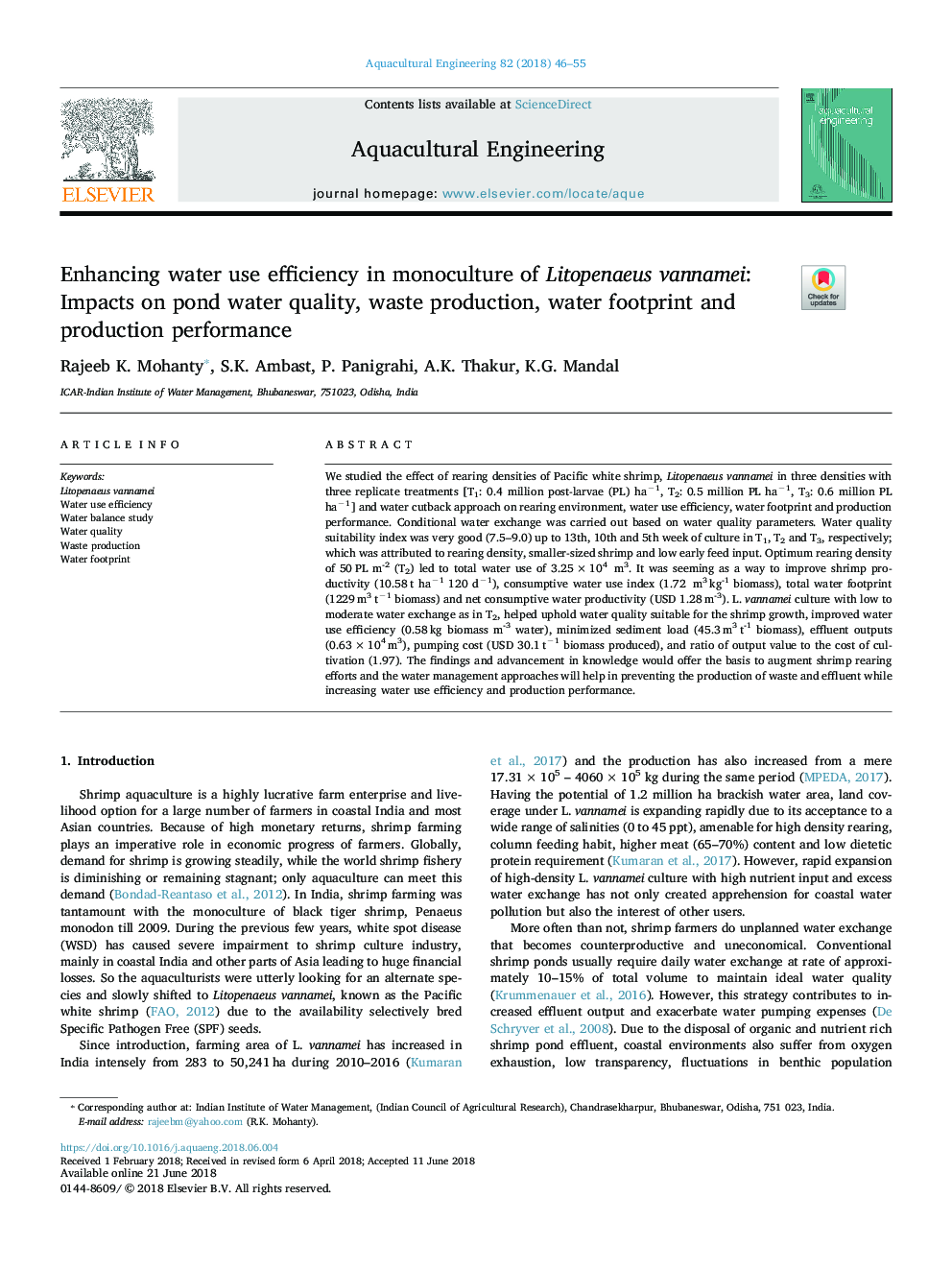| Article ID | Journal | Published Year | Pages | File Type |
|---|---|---|---|---|
| 8883491 | Aquacultural Engineering | 2018 | 10 Pages |
Abstract
We studied the effect of rearing densities of Pacific white shrimp, Litopenaeus vannamei in three densities with three replicate treatments [T1: 0.4 million post-larvae (PL) haâ1, T2: 0.5 million PL haâ1, T3: 0.6 million PL haâ1] and water cutback approach on rearing environment, water use efficiency, water footprint and production performance. Conditional water exchange was carried out based on water quality parameters. Water quality suitability index was very good (7.5-9.0) up to 13th, 10th and 5th week of culture in T1, T2 and T3, respectively; which was attributed to rearing density, smaller-sized shrimp and low early feed input. Optimum rearing density of 50â¯PL m-2 (T2) led to total water use of 3.25â¯Ãâ¯104 â¯m3. It was seeming as a way to improve shrimp productivity (10.58â¯t haâ1 120 dâ1), consumptive water use index (1.72 â¯m3â¯kg-1 biomass), total water footprint (1229â¯m3â¯tâ1 biomass) and net consumptive water productivity (USD 1.28â¯m-3). L. vannamei culture with low to moderate water exchange as in T2, helped uphold water quality suitable for the shrimp growth, improved water use efficiency (0.58â¯kg biomass m-3 water), minimized sediment load (45.3â¯m3â¯t-1 biomass), effluent outputs (0.63â¯Ãâ¯104â¯m3), pumping cost (USD 30.1â¯tâ1 biomass produced), and ratio of output value to the cost of cultivation (1.97). The findings and advancement in knowledge would offer the basis to augment shrimp rearing efforts and the water management approaches will help in preventing the production of waste and effluent while increasing water use efficiency and production performance.
Related Topics
Life Sciences
Agricultural and Biological Sciences
Aquatic Science
Authors
Rajeeb K. Mohanty, S.K. Ambast, P. Panigrahi, A.K. Thakur, K.G. Mandal,
